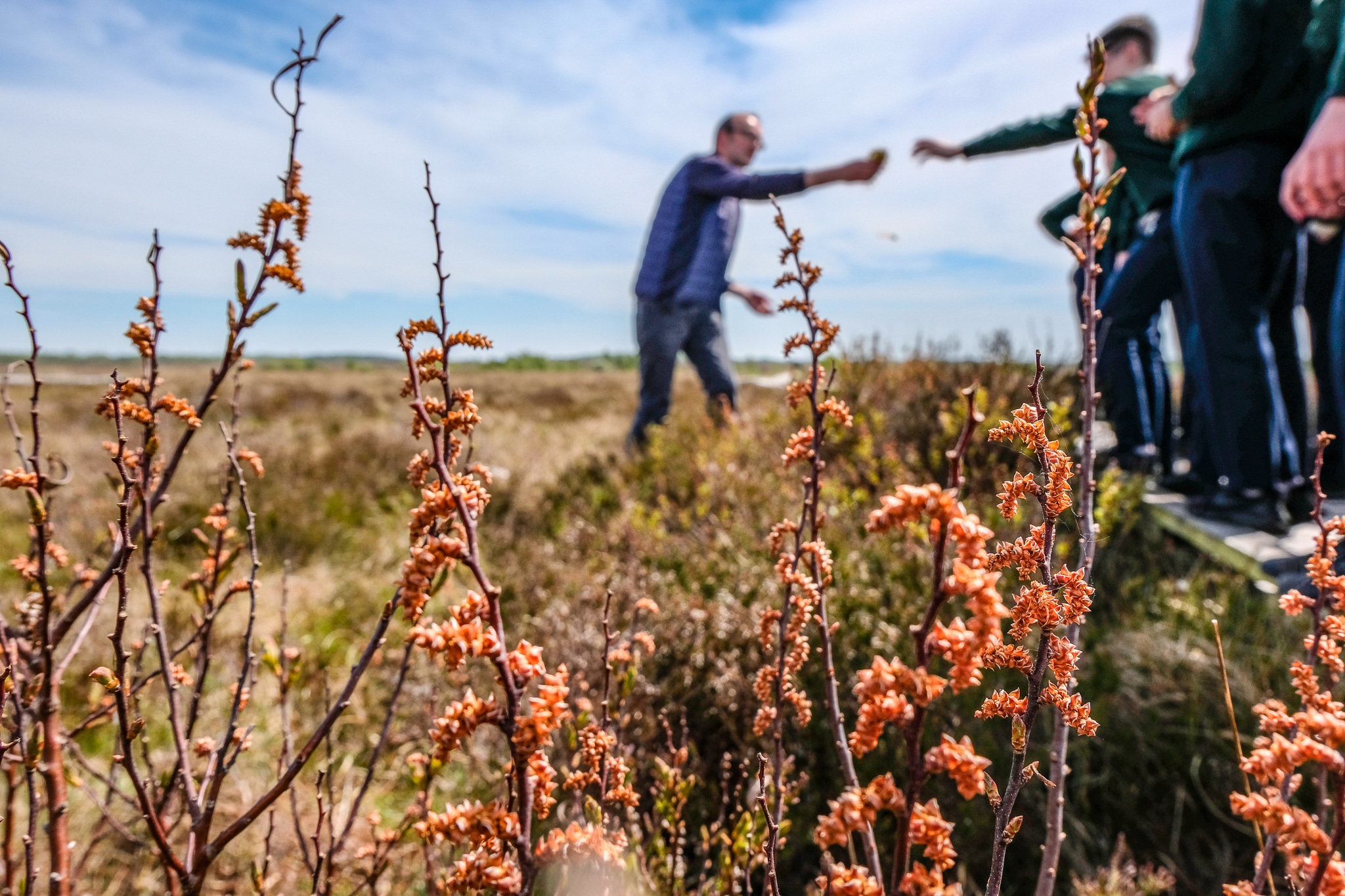Living Bog nominated for Natura 2000 Award
On World Peatlands Day 2020 (02 June), ‘The Living Bog’ Irish raised bog restoration project, co-funded by the NPWS of the Department of Housing, Heritage & Local Government and the EU’s LIFE programme was nominated for one of Europe’s top environmental awards.
The Living Bog, which commenced in 2016 and finishes in December 2021, was among 27 international finalists for the European Commission’s Natura 2000 Awards.
The awards recognise excellence in the management of Natura 2000 sites. The work of Living Bog Public Awareness Manager Ronan Casey with an impressive public awareness campaign and his work with local community groups attached to project sites, saw The Living Bog is nominated in the ‘Communications’ category.
Ronan’s work on communicating the importance of raised bogs and Natura 2000 sites and the work in the local community and the involvement of community groups and individuals – including former turf cutters – in project actions was recognised by the European Union’s environmental bodies as being particularly impressive.
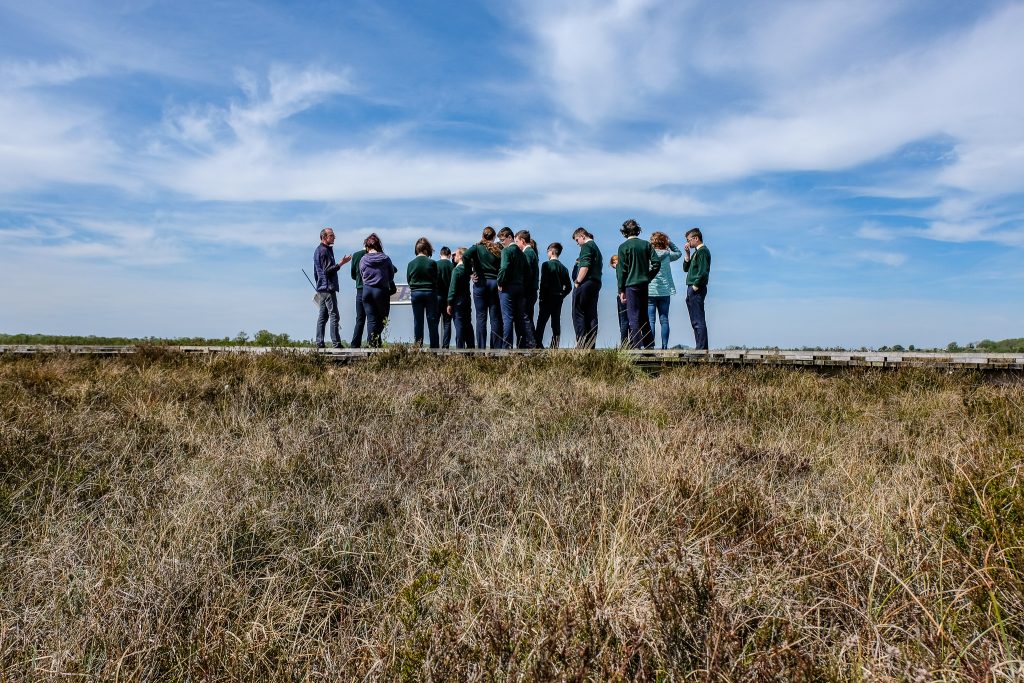
Ronan Casey of The Living Bog project leading an educational tour on Clara Bog SAC, Co Offaly. Pic: Emily Toner, National Geographic.
A high-level jury decided on five winners, but from the finalists the public will also chooses its winner: The Citizens’ Award. The Living Bog finished third in this area.
Since the Natura 2000 awards started in 2014, there have been no Irish winners in any category.
The Living Bog was delighted to have been nominated.
Congratulating the project team on the nomination, the then Minister with responsibility for Heritage, Josepha Madigan TD, commented: “I am delighted that the work of the Living Bog with local communities has been recognised with its nomination for a Natura 2000 Award. This project aims to restore raised bog across 12 raised bog Special Areas of Conservation (SACs) across seven counties. Encouraging local community involvement is a significant element of the project. I wish to congratulate Ronan and the project team on its outstanding efforts to promote awareness of peatland restoration in the local and wider community.”
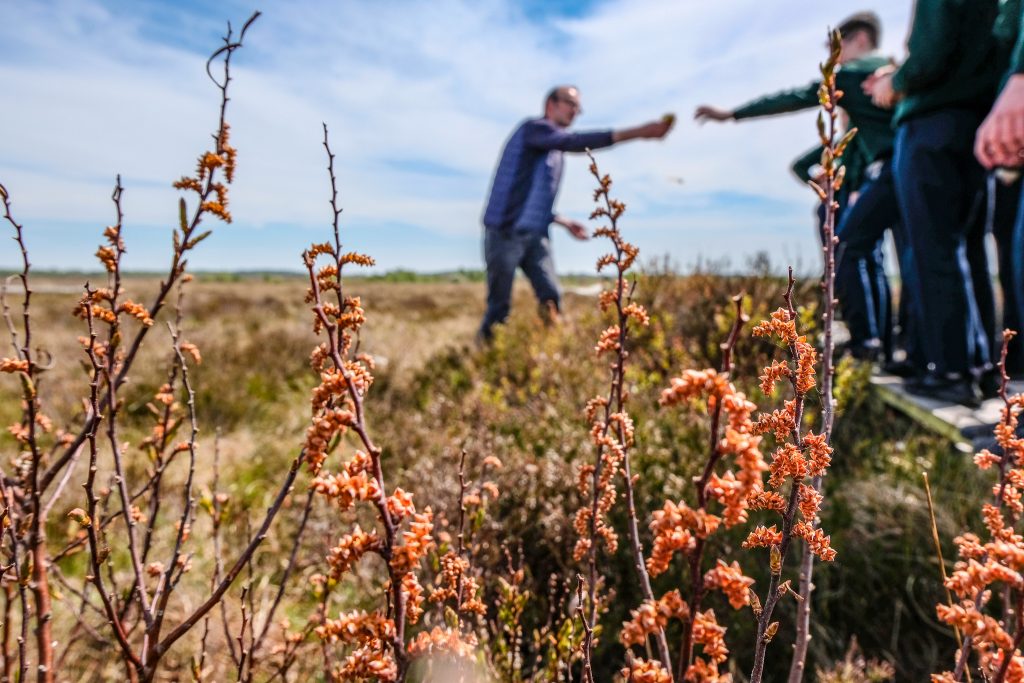
The Living Bog has undertaken an immersive communication and community drive since 2016, with Public Awareness Manager Ronan Casey pictured here on Clara Bog lending a hand to a tour. Pic: Emily Toner
The project is funded by the EU LIFE 2014-2020 Nature and Biodiversity Fund, with the National Parks and Wildlife Service at the Department of Housing, Heritage and Local Government the co-ordinating beneficiary. The project is undertaken by a five-person project team located in the heart of the Irish midlands ‘peat district’ in Mullingar with many local contractors from the midlands region carrying out works throughout seven counties and also lending assistance in areas such as hydrology and ecology. The economic spin-off from the project was estimated to have been over €3m to the midlands region.
The aim of the project is to improve the conservation status of the priority habitat Active Raised Bog (EU Habitat Code 7110). This is being achieved by drain blocking with peat and plastic dams, barrier dam construction and other restoration and improvement measures. In total, almost 200km of drains have been blocked by the project with c.10,000 dams installed.
It is the project’s work in communities and communicating the importance of peatlands and the Natura 2000 Network that has been recognised by the EU. An active programme of community events, from walks and talks to children’s nature camps saw the Living Bog project establish a foothold in local communities. Community volunteers gave up many hours of their time to assist at project events and also to help on many project actions. This was further supported by an intensive social media campaign and web promotional work. A major schools outreach project was also launched. Over 100 schools were involved and children were encouraged to learn more about peatlands and bogs and espouse the benefits of restoration at home and socially.
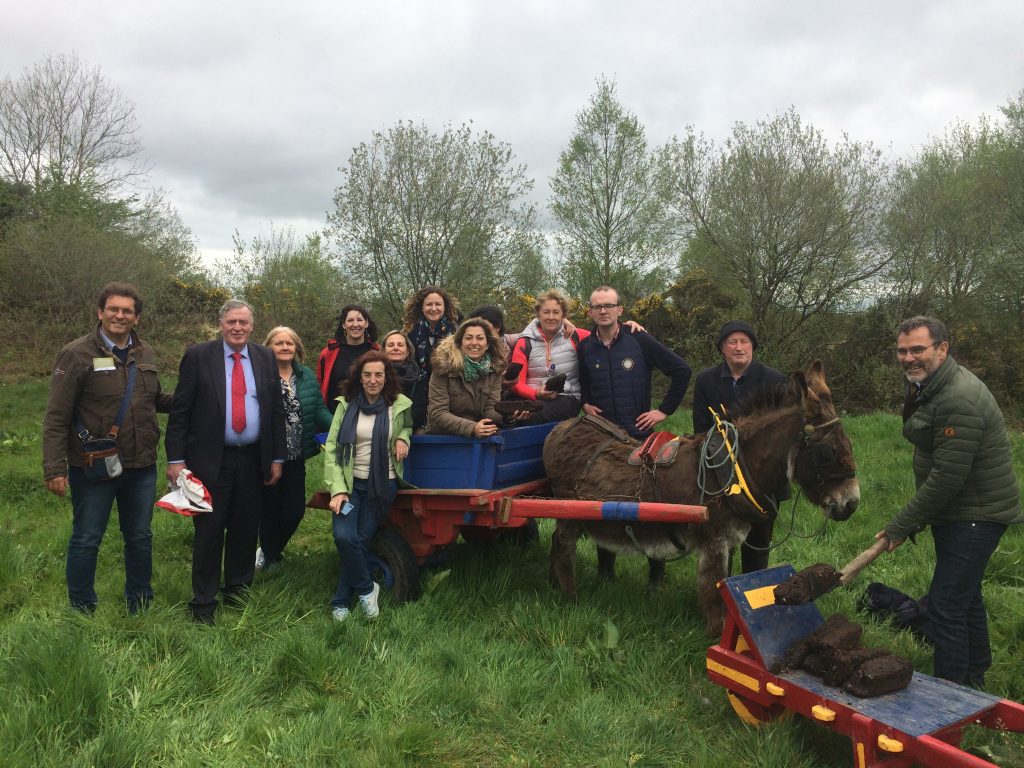
An educational visit to Carrownagappul Bog SAC (aka Galway’s Living Bog) in Mountbellew with former turf cutters turned restoration champions Paul Connaughton and Tommy Cunningham pictured with Living Bog Public Awareness Manager Ronan Casey
Working with local community groups, the project is currently delivering or set to deliver amenity and educational facilities, including boardwalks, walking routes and educational parks, at five locations – pending planning permission decisions for a number of sites. It is anticipated that these developments will generate local health, social and economic benefits.
Notes for Editors:
The bogs involved in The Living Bog project (www.raisedbogs.ie) : Ardagullion Bog SAC, Co. Longford; Carrowbehy Bog SAC, Gorthaganny, Co. Roscommon; Derrinea Bog SAC, Co. Roscommon; Clara Bog SAC, Moyclare Bog SAC, Mongan Bog SAC, Raheenmore Bog SAC, Sharavogue Bog SAC, and Ferbane Bog SAC, all Co. Offaly; Garriskil Bog SAC, Co. Westmeath; Killyconny Bog SAC, Mullagh Co. Cavan / Co. Meath; and Carrownagappul Bog SAC, Mountbellew, Co. Galway.
The project aims to re-create the eco-hydrological conditions on these sites to consolidate over 750 ha of Active Raised Bog within an overall area of almost 2,700 ha of raised bog habitat improved. Restoration works have been completed on ten of the 12 project sites and are being monitored closely to identify site response in relation to hydrology, ecology and water chemistry. To date, results have been positive, especially in the area of cutover restoration.
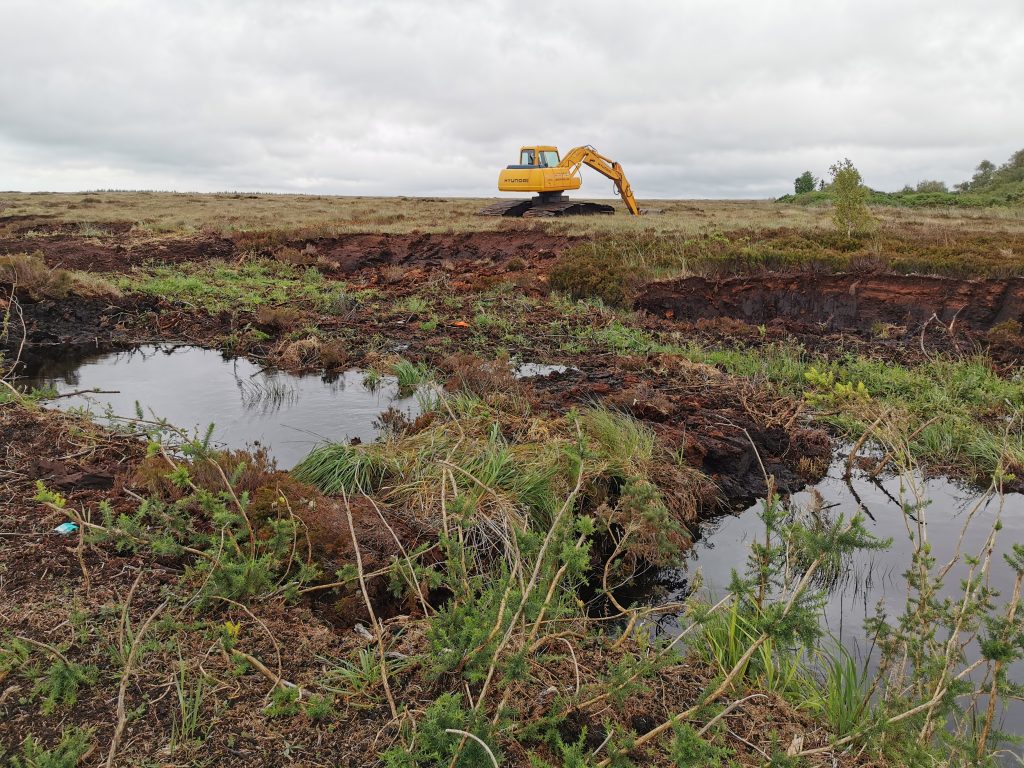
On 12 raised bogs, local contractors have blocked 200 km of drains with over 10,000 peat dams. Community involvement was another big aspect of the project and it is for this they have been nominated for a Natura 2000 Award
Cutovers are where peat was extracted from the raised bogs in the past, and novel restoration techniques have seen many rare flora and fauna re-populate the sites relatively quickly after restoration works have taken place.
Active raised bogs once covered over 766,000 acres of the Irish midlands (Hammond, 1979). Turf extraction and peat harvesting on an industrial scale along with other activities have, however, stripped much of this away, to the extent that approx. 9% of the original raised bog resource remains in protected sites with less than 1% (1,639 ha) of active raised bog left nationally.
To endeavor to ensure the protection of the remaining peatlands, 53 raised bog sites were nominated for designation as SAC/Natura 2000 sites in the late 1990s/early 2000s.
The Natura 2000 Awards
The Natura 2000 Award is designed to reward excellence in the management of Natura 2000 sites (Special Areas of Conservation and Special Protection Areas) and showcase the added value of the network. It pays tribute to all those who work to make Natura 2000 a success whilst drawing public attention to its substantial achievements.
The Natura 2000 network works to ensure the long-term survival of Europe’s most valuable and threatened species and habitats, and is the centre piece of the EU’s nature and biodiversity policy. It is currently made up of over 27,800 sites. In total, it covers almost a fifth of Europe’s land area and almost 10% of the EU marine areas, making it the largest coordinated network of conservation areas anywhere in the world.
In 2014, the European Commission launched the annual European Natura 2000 Awards; the aim of which was to demonstrate what the network is, what it does to preserve Europe’s biodiversity, and how it benefits us all. The finalists chosen represent the efforts by Europeans to protect and restore nature in the EU – through conservation actions on the ground, by raising awareness about species and habitats, by highlighting the socio-economic benefits of the Natura 2000 network and by bringing stakeholders together. To date, no Irish project has won an award at the award ceremonies, held each year in Brussels.
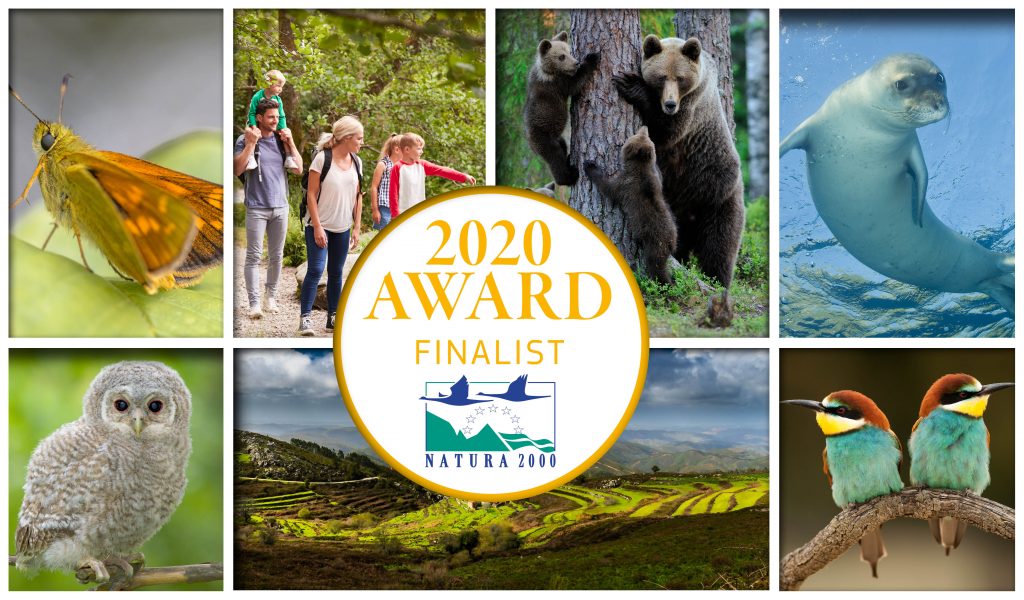
Further Info:
The Living Bog: www.raisedbogs.ie and @LIFEraisedbogs on Facebook and Twitter.
Natura 2000 Awards: https://ec.europa.eu/environment/nature/natura2000/awards/index_en.htm
National Parks and Wildlife Service: www.npws.ie
LIFE Programme: https://ec.europa.eu/easme/en/life
